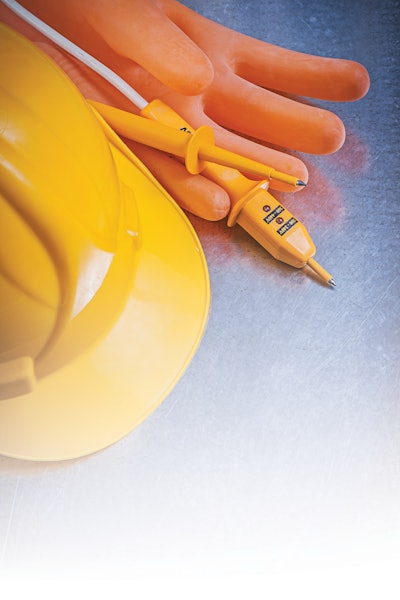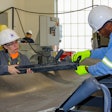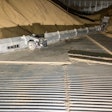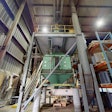
Exposure to electricity in the workplace killed an average of three people per week in 2018, according to data from the U.S. Bureau of Labor Statistics.(1)
This number doesn’t include the thousands of serious but non-fatal electrical injuries that occur every year.
Although the National Fire Protection Association (NFPA) notes the number of such injuries has fallen steadily in recent years, the costs associated with these instances remain alarmingly high, from the victim’s medical costs and lost productivity to possible OSHA penalties. Factor in potential costs from litigation and negative press, and a single electrical injury can be well over six figures.
One of the primary causes of electrical injuries is arc flashes. To safeguard against arc flash hazards, it’s important to understand what an arc flash is and what safety measures need to be in place to minimize risks to employees and business operations.
What is arc flash?
An arc flash is a release of energy that happens during a fault, or short circuit, in an electrical system. Faults occur for several reasons, such as accidental contact with an energized wire, compromised insulation or physical damage of components during normal operation or maintenance. If not rapidly extinguished, this type of short circuit produces an uncontrolled arc between two conductive surfaces. Under certain conditions, the high temperature of the arcing current can vaporize the conductors, resulting in an explosion of hot gases, molten metal and a pressure wave. Arc flashes can result in severe injuries from impact damage and burns to the body, including fatal third-degree burns.
Electrical safety and arc flash risk assessment
Electrical safety-related work requirements for general industry are detailed in OSHA’s Code of Federal Regulations (CFR) Title 29, Part 1910, Subpart S, in Sections 1910.331–1910.335. These requirements describe several elements organizations must establish in their electrical safety program. The OSHA regulations are based on the NFPA standards NFPA 70, National Electric Code (NEC) and NFPA 70E.
One element is the Arc Flash Risk Assessment. NFPA 70E requires an Arc Flash Risk Assessment be performed to identify and document potential arc flash hazards for all facilities with three-phase electrical power systems. This standard covers every type of commercial, industrial and institutional facility enterprise.
Arc flash risk assessments may be conducted by an electrical engineer or other qualified electrical workers with the experience and knowledge to document the electrical systems; build a digital model of the electrical systems; and analyze, interpret and communicate the results to workers.
The process typically starts with a site visit to document the existing electrical equipment and collect all necessary information to build a model of the electrical distribution system using a computer program such as SKM or ETAP. The digital model can be used to simulate a short-circuit event within each electrical enclosure to calculate the magnitude of an arc flash incident.
- A typical Arc Flash Risk Assessment includes:
- One-line diagram of the electrical distribution system
- 年代hort-circuit (fault) analysis for each piece of electrical equipment
- Potential arc flash energy levels
- Warning labels with detailed information for the equipment modeled
- Protective device settings for circuit breaker or fuse selection
年代ome professionals may also provide findings for NEC violations and recommendations to meet proper installation requirements. In addition, they may optimize device settings to reduce dangerous levels of incident energy, discuss the results of the risk assessment with applicable personnel and review proper personal protective equipment (PPE) applications and lock-out/tag-out procedures.
The assessment results are compiled into a report with the study findings, arc flash labels, updated breaker settings and one-line diagrams; the final report and contents are typically certified by a licensed professional engineer.
An Arc Flash Risk Assessment must be reviewed and reanalyzed at least every five years or if a significant change is made to the system. It falls on the owner of the equipment to ensure the labels are updated and accurate to properly protect employees.
Arc flash protection
The equipment labels generated by an Arc Flash Risk Assessment provide information for workers to protect themselves from an arc flash, including nominal system voltage, the arc flash boundary and either a description of the required PPE or the incident energy (IE) level and corresponding working distance.
Employers are required to provide and maintain proper PPE for employees to wear while working on live equipment. The PPE necessary to protect someone working on a specific piece of equipment is based on that equipment’s IE level.
Final thoughts
As a facility owner, you are responsible for the accuracy of the arc flash labels on your equipment, as well as worker training and the availability of proper PPE for employees. NFPA 70E provides specific requirements for facility owners, and failure to comply with these standards presents a substantial risk to workers and business operations. Above all, the cost to perform an Arc Flash Risk Assessment is minimal compared to the potential losses from an electrical injury event. ■
(1) U.S. Department of Labor, Bureau of Labor Statistics. “National Census of Fatal Occupational Injuries in 2018,” News release, (December 17, 2019).
INCIDENT ENERGY AND PPE
For IE exposure equal to 1.2 – 12 calories/cm², the NEC specifies PPE that includes arc-rated pants, long-sleeved shirt, gloves, jacket and baclava. An arc-rated face shield and hard hat, along with safety goggles, hearing protection and leather footwear are also required.
For IE exposure greater than 12 calories/cm² up to 40 calories/cm², the aforementioned PPE is required, with the addition of arc-rated flash suit pants, jacket and hood.
Working on equipment above 40 calories/cm² is prohibited at most facilities. While the NFPA doesn’t include PPE requirements for IE levels below 1.2 calories/cm², shock protection equipment is still required.
Morgan Andersonis an Electrical Engineer in Training (EIT) at VAA with four years of experience in electrical construction design, electrical equipment specifications and arc flash risk assessments. She has assisted with and completed several arc flash risk assessments for multiple industrial and agribusiness clients.
Devon Nelsonvis an Electrical Engineer in Training (EIT) at VAA with more than four years of experience. Prior to his work at VAA, he spent nearly three years performing arc flash risk assessments across the U.S., Canada and Central America for a Fortune 500 agribusiness and commodities trading company.
















